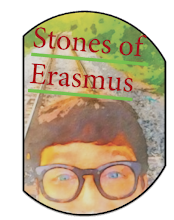Alexander, a master of propaganda, meticulously managed the various depictions of his likeness across his empire. He entrusted the production of his image exclusively to a select group of sculptors and painters. These artists depicted him as youthful, with a clean-shaven face, long hair, and a dynamic pose characterized by a turning head. This style of portraiture was somewhat adopted by Alexander’s successors, but it exerted a more significant influence on the portraits of later Hellenistic kings and private individuals. Alexander was deified during his lifetime, and following his death, he was venerated as a god in images like this one.
Hi, I’m Greig — welcome! Here you’ll find sharp writing, creative ideas, and standout resources for teaching, thinking, making, and dreaming in the middle and high school ELA and Humanities classroom (Grades 6–12).
31.3.24
Alexander the Great's Portrait at British Museum: Deification & Legacy in Art
Hey, y’all. I’m in the British Museum. This marble portrait represents Alexander the Great and dates back to the 2nd century B.C.E.
Labels:
Alexander,
ancient,
art,
British Museum,
Graeco-Roman,
propaganda,
sculpture
 I am an educator and a writer. I was born in Louisiana and I now live in the Big Apple. My heart beats to the rhythm of "Ain't No Place to Pee on Mardi Gras Day". My style is of the hot sauce variety. I love philosophy sprinkles and a hot cup of café au lait.
I am an educator and a writer. I was born in Louisiana and I now live in the Big Apple. My heart beats to the rhythm of "Ain't No Place to Pee on Mardi Gras Day". My style is of the hot sauce variety. I love philosophy sprinkles and a hot cup of café au lait.
Subscribe to:
Post Comments (Atom)
No comments:
Post a Comment
Be courteous. Speak your mind. Don’t be rude. Share.